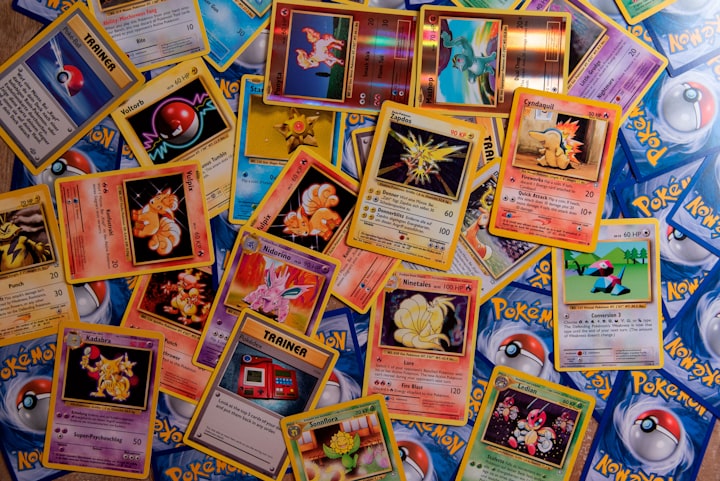The Definitive Mob Movie: 'The Godfather' Turns 43
Even now, we can't look at weddings, horses or toll booths in the same way and the legacy of The Godfather lives on, four decades later.

"Luca Brasi sleeps with the fishes..."
Even now, we can't look at weddings, horses or toll booths in the same way and the legacy of The Godfather lives on, four decades later. The Frances Ford Coppola crime epic graced our screens on March 24, 1972 and was responsible for creating the worlds of Nucky Thompson, Tony Soprano and Frank Costello that we know today. We nod our fedoras to Vito Corleone and his orange peel mouth.

The Birth Of The Mob
Based on the 1969 crime novel written by Mario Puzo, The Godfather spanned the years of 1945 – 1955 in Little Italy, tracking the rise of Michael Corleone as he came to power under the tutelage of his mob boss 'Don', father, Vito Corleone (Marlon Brando). The novel itself had been on the New York Times Best Seller list for 67 weeks and sold over nine million copies in just two years.

Puzo was offered $12,500 for his sixty-page unfinished manuscript and a further $80,000 if it was made into a film. His agent told him to turn down the offer, but desperate for money, Puzo accepted.
As for the director? Ford Coppola wasn't the first choice for director, nor the second, nor third. Paramount reportedly approached Coppola only after 12 other directors had been asked, finally choosing him as he would work for little money. The studio wanted to set it in a modern day New York, but Coppola said they should stick to their source material. Had Paramount got its way we would have had a very different film.

It is The Godfather's cast that makes it stand the test of time so well. Alongside Brando and Pacino, we had James Caan, Diane Keaton and even some of Coppola's own family as extras. But it was always Vito that was in the mind of Coppola, who wrote to an ageing Brando saying he was the only man who could play the Don. Orson Welles lobbied for the part (offering to lose weight), but Coppola was unconvinced he could play a mafia boss. Even Frank Sinatra expressed interested in playing the Corleone head, despite being annoyed that the character of Johnny Fontane was apparently based on him. The role of Michael was also hotly contested when Al Pacino was originally thought to be 'too short' to play Michael, but after Coppola's insistence, was hired.
The road to screen was a bloody one and Coppola had a troubled relationship with Paramount. Budget cuts and head butting meant that Coppola repeatedly fired staff who attempted to reshoot his scenes. He probably would have been sacked if it weren't for Brando, who repeatedly said that if Coppola left, so would he, presumably taking his cotton ball cheeks and iconic voice with him!
Named as Empire Magazine's No.1 film of all time and scoring a 99% rating on Rotten Tomatoes, The Godfather is one of the most influential films of all time. Ranked second, only to Citizen Kane, The Godfather was entered to the United States National Film Registry in 1990 for being "culturally, historically, or aesthetically significant."
The Godfather was (at the time) the highest grossing film of all time and hit big at the Academy Awards for Best Picture, Best Actor and Best Adapted Screenplay. Although it was Brando who won best actor, there was stiff competition in the category of supporting actor, with Pacino, James Caan and Robert Duvall all being nominated.
The Legacy

A sequel came in 1974, with The Godfather Part II arguably being superior to the first - opinions will always be divided on the issue, but personally I am not convinced. A hotly contested issue, this debate has even seeped into popular culture, like when the movie class scene in Scream 2 makes a meta reference to Part II being the better. You have to remind yourself though that without the first, there would never have been the sequel.
Coppola has always stated that The Godfather films were only Part I and Part II, with the finale, Part III, serving more as an epilogue. He had originally envisaged the third to be called The Death of Michael Corleone, but Paramount turned it down.
But did it end there? Ideas of a Part IV were discussed by Coppola after the success of the first three as a whole (not necessarily individually). Unfortunately talks of more were stifled by the death of Mario Puzo and mixed responses to Part III. A fourth film would see Robert De Niro reprise his role as a younger Vito Corleone in the 1930s, whilst a separate tangent during the 1980s saw Andy Garcia once again play Vincent Corleone, haunted by the death of his cousin Mary. Despite never entering production, the unfinished script was eventually adapted into the 2012 Ed Falco book, The Family Corleone.
In 2008 Coppola returned to his legacy to complete a year and a half project - The Godfather: The Coppola Restoration. This saw the original film returned to the "golden glow of their original theatrical screenings."
Popular Culture

Outside the novel and the three films, The Godfather has become a time bubble. Whilst there never was a fourth film or a dreaded reboot (thank god), The Godfather trilogy has managed to remain its own entity. This isn't to say it hasn't had an influence on other films and shows, as for the references, there could be a whole article purely based on these. In The Sopranos, Tony Soprano's bar 'Bada-Bing' references the line from the film, and the British comedy The IT Crowd has an episode titled Jen The Fredo. Meanwhile Futurama, Family Guy and The Simpsons all have characters that mirror Don Corleone, the most notable being The Simpsons' own mob boss, Fat Tony. George Lucas even states that the rise of The Galactic Empire in Return of the Sith and the relationship between Anakin and The Emperor was a homage to the christening and assassination sequence in The Godfather.

Culturally The Godfather opened to door to a varied look at Italian-Americans. Whilst unfortunately still reinforcing some of the gangster stereotypes, The Godfather also did its best to squash some. The Godfather depicted the human element of the mob. As the British are obsessed with The Royal Family, so were Hollywood obsessed with The mob Royal Family. Lessons weren't always learnt though, in 1983's Scarface Italians were still some odd exotic alien race which were a mystery, headed up by the psychotic Tony Montana.

A book called The Godfather Effect reminds us that the film really was more than just a cash cow for Hollywood, author Tom Santopietro says:
Here we are 40 years later and all the news reports of the mob now refer to so and so as the godfather of the Gambino crime family. Real-life mobsters now actually say, “I am going to make him an offer he can’t refuse.” That was totally invented by Puzo. I think these are phrases and terms that are not just used by the general public, but are also used by the FBI. So that is a powerful piece of art. The Godfather reaches its tentacles into so many levels of American life. I love the fact that it is Obama’s favourite movie of all time. I just love that.

Whilst we wait for the rights to run out and directors to paw over the inevitable chances to remake The Godfather, for the time being it remains an untouched gem of the cinematic world. Happy Birthday to the Corleone family, make us an offer we can't refuse!
About the Creator
Tom Chapman
Tom is a Manchester-based writer with square eyes and the love of a good pun. Raised on a diet of Jurassic Park, this ’90s boy has VHS flowing in his blood. No topic is too big for this freelancer by day, crime-fighting vigilante by night.






Comments
There are no comments for this story
Be the first to respond and start the conversation.